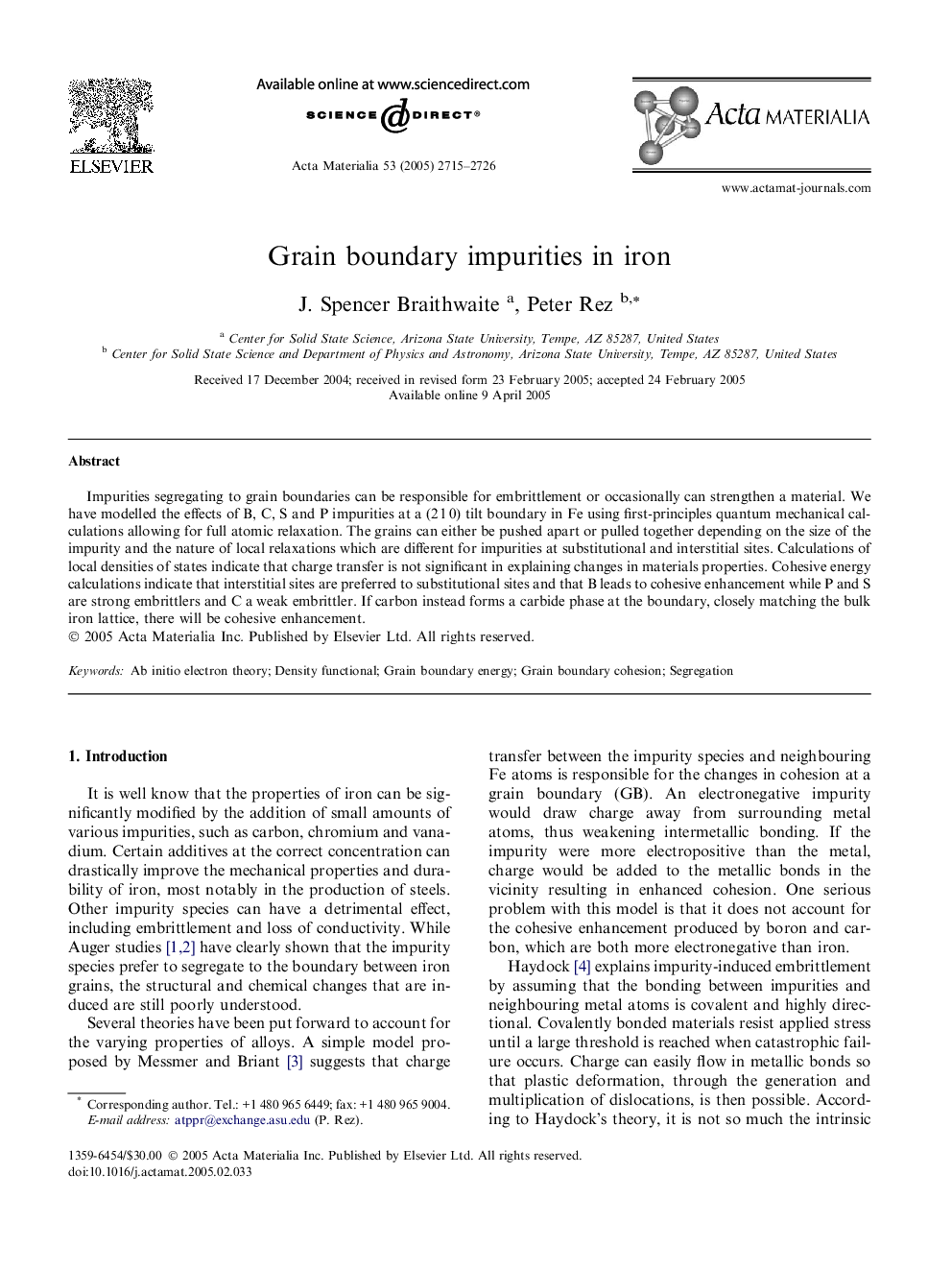| Article ID | Journal | Published Year | Pages | File Type |
|---|---|---|---|---|
| 1451367 | Acta Materialia | 2005 | 12 Pages |
Impurities segregating to grain boundaries can be responsible for embrittlement or occasionally can strengthen a material. We have modelled the effects of B, C, S and P impurities at a (2 1 0) tilt boundary in Fe using first-principles quantum mechanical calculations allowing for full atomic relaxation. The grains can either be pushed apart or pulled together depending on the size of the impurity and the nature of local relaxations which are different for impurities at substitutional and interstitial sites. Calculations of local densities of states indicate that charge transfer is not significant in explaining changes in materials properties. Cohesive energy calculations indicate that interstitial sites are preferred to substitutional sites and that B leads to cohesive enhancement while P and S are strong embrittlers and C a weak embrittler. If carbon instead forms a carbide phase at the boundary, closely matching the bulk iron lattice, there will be cohesive enhancement.
